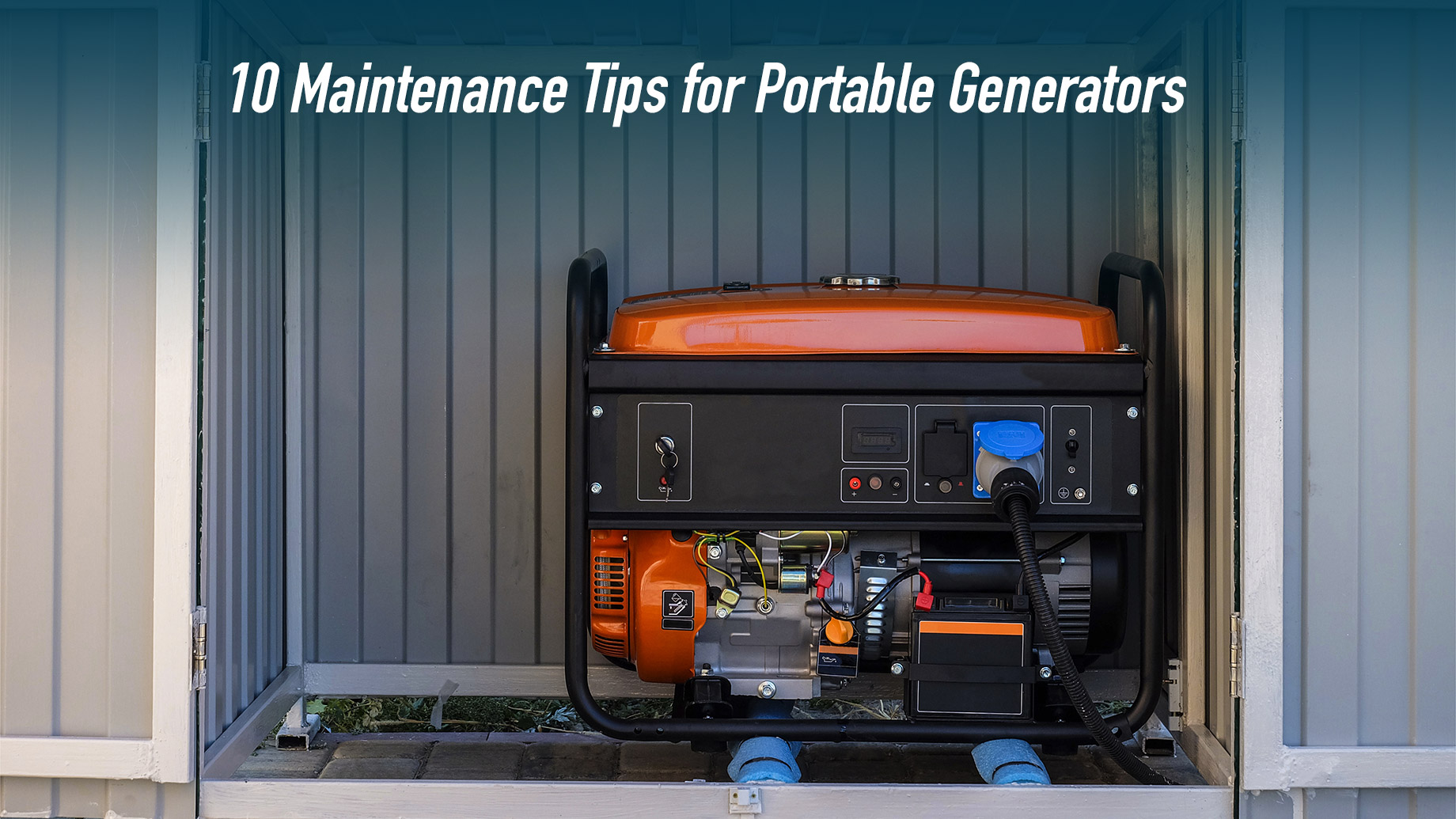
Unlike standby generators, you can take your portable generator anywhere and enjoy an uninterrupted power supply. For camping, a small or medium portable generator would suffice.
Apart from buying a robust generator and getting it installed, you should keep it under proper maintenance. Else, it may surprise you with sudden breakdowns.
Follow these maintenance tips and you’ll never have to worry about your generator’s functionality.
1. Storage
When not in use, your generator must be stored with care. Most instruction manuals provide detailed storage information.
Though you can store the generator with fuel by adding a fuel stabilizer, draining off the fuel is the best way to go. Make sure the generator has cooled down completely before draining its fuel.
Investing in a generator enclosure will benefit in the long run. You can store a clean generator in it. Your generator will get ample ventilation but remain dirt-free. You can let the generator be in the enclosure even when you’re using it later.
2. Clean The Spark Plug
Ideally, the spark plug must be checked after every 100 hours of usage. It’s common to find oil and carbon residues on the plug.
Use compressed air to remove debris. Clean the spark plug’s electrode with sandpaper.
With a wire brush, scrub the threads gently. Too much scrubbing can disrupt the threads making the plug ‘unfit’.
If the spark plug has cracks, cleaning won’t be enough. You’ll have to replace it. After all, the spark plug is crucial to start the generator’s engine.
3. Backup Fuel
If there’s a blackout, it can take days for the electric supply to be restored. So, it’s a good idea to store plenty of fuel that can last throughout the emergency.
Propane’s long shelf life makes it a widely sought option by generator buyers. Inverter generators mostly use gasoline and you can find the best ones on this post.
Whatever may be the fuel you’re going to stock up on, adding some fuel stabilizer prolongs its shelf life.
Always keep the fuel containers upright and store them in a cool and dry area.
4. Run It Often
What happens when you let your generator sit idle for a long time?
Moisture could accumulate and damage the generator internally.
Experts recommend running your generator with a load once a month. This is called a test run and for automatic generators, you can set a timer for it.
You should use an artificial load that tests the generator at its full potential. Only through this phase will your generator get to practice maintaining its efficiency. Consider it as an exercise for your generator.
5. Replace The Air Filter
The air filter is the powerful component that absorbs dirt particles thus preventing them from interrupting the combustion chambers. So cleaning it periodically is an essential step.
Start by removing the wire that connects the spark plug. This prevents the generator from accidentally running without the air filter when you’re cleaning it
Now locate the air filter and remove it. If it’s a paper filter, dust it gently. If it’s a foam filter, clean it with a mild detergent and warm water. Coat it with a little bit of air filter oil.
If you notice holes in the filter, it’s time to get a brand new one.
6. Clear The Debris At The Enclosure
As we discussed in the first tip, by investing in an enclosure, you’re taking your generator’s protection to an upper level.
Enclosures are available in different types viz weather-protective, noise-reducing and walk-in. You can even get an enclosure custom-made according to the space availability.
As much as you care for your generator, you should clean the enclosure too. Accumulation of debris at the enclosure puts extra pressure on the air filter and damages the generator.
7. Coolant Levels
Coolant prevents the metal parts from rusting and provides lubrication to the bearings. It is a mixture of clean water and antifreeze (usually ethylene glycol).
The coolant must be replaced at least twice a year because rust can reduce its effectiveness over time.
Clean the cooling system thoroughly with water before refilling it with the coolant. The entire process takes less than an hour. Check the instructions in the manual and avoid skin contact with the coolant.
8. Battery Life
Ensure there’s always sufficient water for your batteries. Use only distilled water and if it’s unavailable, RO water is safe too.
Check the battery’s water level once a month. If the level drops down, remove the vent plugs and pour distilled water through a funnel.
The wiring terminals should be protected from oxidation by a thin layer of petroleum jelly. Oxidation can loosen the battery from its place and interrupt the generator’s functionality.
Remember to turn off the generator and let it cool down completely before checking the battery.
9. No Fuel Leaks
If you’ve been using a generator for years, at some point in time, your technician might have told you that your generator’s carburetor is leaking fuel.
Fuel leakage is dangerous enough to cause an explosion. It damages the generator, as well. Know how to detect such issues before things get out of control.
By using a high-quality leak detection system, you’ll be alerted as soon as the leak starts giving you time to locate it and call a professional to repair it.
10. Get A Solid Power Cord
To ensure zero power wastage and unwanted damage to your appliances, you should choose an appropriate power cord.
Know the amps of your power outlet and get a cord of the same amps. For example, if the most powerful outlet on the generator is 30-amps and 4-prong, you should get a 30-amps and 4-prong power cord. A 20-amps and 4-prong cord is a bad choice and so is the 30-amps and 3-prong cord.
When running a check, if you see the power cord is damaged, replace it immediately.